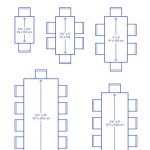Vegetable Garden Designs And Layouts
When planning your vegetable garden, there are many factors to consider, including the amount of space you have, the amount of sunlight your garden receives, and the types of vegetables you want to grow. Once you have considered these factors, you can start to think about the design and layout of your garden.
There are many different ways to design a vegetable garden. Some popular designs include raised beds, square foot gardening, and traditional row gardening. Raised beds are a good option if you have poor soil or if you want to extend your growing season. Square foot gardening is a good option if you have a small space. Traditional row gardening is the most common type of vegetable garden design, and it is a good option if you have a large space.
Once you have chosen a design for your vegetable garden, you need to decide how you want to lay it out. There are many different ways to lay out a garden, and the best way for you will depend on the size and shape of your garden and the types of vegetables you want to grow.
Here are some tips for laying out your vegetable garden:
Plan your garden on paper before you start planting. This will help you to visualize your garden and make sure that you have enough space for all of the vegetables you want to grow.
Group similar vegetables together. This will make it easier to care for your plants and to harvest your vegetables.
Consider the amount of sunlight that your garden receives when you are planning your layout. Some vegetables, such as tomatoes and peppers, need full sun, while others, such as lettuce and spinach, can tolerate partial shade.
Make sure that you have easy access to water when you are planning your layout. You will need to water your plants regularly, especially during hot weather.
Leave enough space between your plants so that they have room to grow. Overcrowding can lead to disease and poor growth.
Use trellises and other supports to help your plants grow vertically. This can save space and improve air circulation.
Mulch your garden to help retain moisture, suppress weeds, and regulate soil temperature.
By following these tips, you can create a beautiful and productive vegetable garden that will provide you with fresh, healthy vegetables all season long.
Here are some additional tips for designing and laying out your vegetable garden:
Consider using companion planting to improve the growth and yield of your vegetables. Companion planting is the practice of planting different types of plants together that benefit each other.
Use a crop rotation plan to help improve soil health and prevent disease. Crop rotation is the practice of planting different types of vegetables in the same location each year.
Keep a garden journal to track your progress and learn from your experiences. A garden journal can help you to identify what works well in your garden and what doesn't.
With a little planning and effort, you can create a beautiful and productive vegetable garden that will provide you with fresh, healthy vegetables all season long.

Vegetable Garden Layout 7 Best Design Secrets A Piece Of Rainbow

Vegetable Garden Ideas Designs And Layouts For Backyards

How To Design The Perfect Vegetable Garden Layout Plant

Vegetable Garden Layout 7 Best Design Secrets A Piece Of Rainbow

Planning Your Vegetable Garden Mapping The Beds

Vegetable Garden Layout Planning Bonnie Plants

How To Design The Perfect Vegetable Garden Layout Plant

Small Vegetable Garden Ideas Gate

7 Vegetable Garden Layout Ideas To Grow More Food In Less Space

Simple Vegetable Garden Layout Plans And Spacing Tips Farm Fit Living








